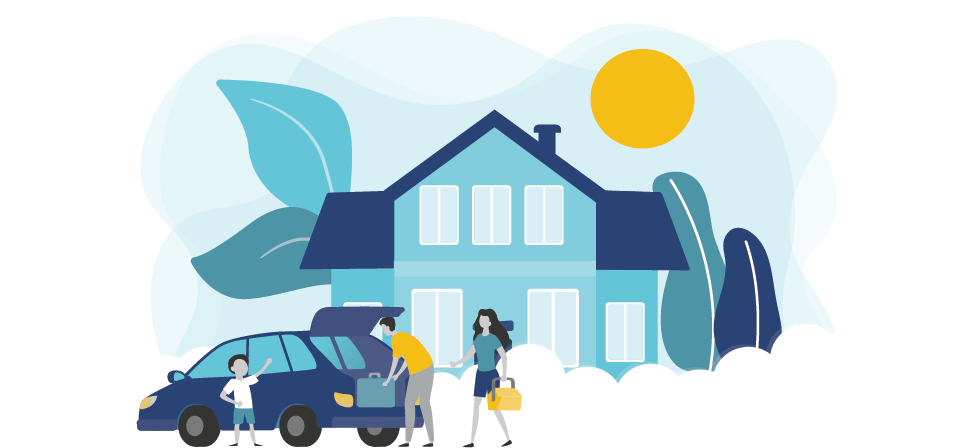Welcome to the magical realm of home and auto insurance! Now, you might be thinking, “Insurance? Magical? Are you serious?” Well, buckle up (pun intended) because we’re about to embark on an informative and entertaining journey through the labyrinth of policies, premiums, and peace of mind. By the end of this 2000-word odyssey, you’ll be well-versed in the intricacies of home and auto insurance, armed with the knowledge to make informed decisions, and, dare I say, you might even crack a smile or two.
- Unlocking the Secrets of TD Insurance Quotes: A Comprehensive, Hilarious Guide to Insuring Your Future 2024
- Simply Business Insurance: Navigating the Complex World of Coverage with a Smile 2024
- Best Guide to Crop Insurance 2024
- Marine Liability Insurance: Best Guide 2024
- Hull Insurance: Best Safeguarding Maritime Assets 2024
Table of Contents
The Basics of Home and Auto Insurance
What is Home Insurance?
Home insurance, often referred to as homeowner’s insurance, is a type of property insurance that provides financial protection against various risks. These risks include damage to your home, and personal property, and liability for accidents that may occur on your property. Imagine your home as a fortress, and home insurance as the invisible shield that protects it from dragons (read: fire, theft, natural disasters).

There are several types of home insurance policies, with the most common being:
- HO-1: Basic Form – Covers only the most common perils.
- HO-2: Broad Form – A step up from HO-1, covering more perils.
- HO-3: Special Form – The most popular, covering all perils except those specifically excluded.
- HO-4: Tenant’s Form – Designed for renters, covering personal property and liability.
- HO-5: Comprehensive Form – Provides the broadest coverage for both the dwelling and personal property.
- HO-6: Condo Form – For condominium owners, covering personal property and the interior structure.
- HO-7: Mobile Home Form – Specifically for mobile or manufactured homes.
- HO-8: Older Home Form – Tailored for older homes where the cost to replace might be higher than the market value.
For more details on the types of home insurance, check out the Insurance Information Institute.
What is Auto Insurance?
Auto insurance is a contract between you and an insurance company that protects you against financial loss in the event of an accident or theft. In exchange for your premium payments, the insurance company agrees to pay for your losses as outlined in your policy. It’s like having a superhero on standby, ready to swoop in and save the day (and your wallet) when misfortune strikes.
Auto insurance policies typically include several types of coverage:
- Liability Coverage – Covers bodily injury and property damage to others if you’re at fault in an accident.
- Collision Coverage – Pays for damage to your car resulting from a collision, regardless of who is at fault.
- Comprehensive Coverage – Covers damage to your car from non-collision events, such as theft, fire, or natural disasters.
- Uninsured/Underinsured Motorist Coverage – Protects you if you’re hit by a driver with little or no insurance.
- Medical Payments Coverage – Covers medical expenses for you and your passengers after an accident.
For a deep dive into auto insurance, visit the National Association of Insurance Commissioners.
The Importance of Bundling Home and Auto Insurance
Bundling home and auto insurance can be a smart financial move, much like buying in bulk at your favorite warehouse club. By combining these policies with a single insurer, you can often enjoy significant discounts and a simplified management process. Imagine juggling two flaming torches (separate policies) versus one (a bundled policy) – which would you prefer?
Benefits of Bundling
- Cost Savings – Insurers often offer discounts for bundling, which can lead to substantial savings on your premiums.
- Convenience – Managing one policy instead of two simplifies your paperwork and payment processes.
- Enhanced Coverage Options – Bundling might give you access to additional coverage options or higher coverage limits.
- Loyalty Perks – Staying with the same insurer for multiple policies can sometimes unlock loyalty benefits or further discounts.

To explore bundling options, head over to State Farm or Allstate.
Navigating the Claims Process with a Smile
Filing a claim can be a daunting process, but with a bit of preparation and a positive attitude, you can navigate it smoothly. Here are some steps to follow:
- Document Everything – Take photos, videos, and notes of the damage or incident. This evidence will be invaluable when filing your claim.
- Contact Your Insurer Promptly – Notify your insurance company as soon as possible. Many insurers have 24/7 claim hotlines or online portals for quick and easy reporting.
- Complete Necessary Forms – Fill out the required claim forms accurately and thoroughly. Provide all requested documentation to avoid delays.
- Work with the Adjuster – Your insurance company will assign an adjuster to assess the damage and determine the payout. Cooperate with them and provide any additional information they request.
- Review the Settlement Offer – Once the adjuster has completed their evaluation, you’ll receive a settlement offer. Review it carefully and ask questions if anything is unclear.
- Receive Your Payout – If you agree with the settlement offer, you’ll receive your payout. If not, you can negotiate or appeal the decision.
For more tips on handling insurance claims, visit the Insurance Information Institute.
Common Myths About Home and Auto Insurance
Insurance is often shrouded in myths and misconceptions. Let’s debunk some of the most common ones:
Myth #1: Red Cars Cost More to Insure
Truth: The color of your car has no impact on your insurance premiums. Insurers care about the make, model, age, and condition of the vehicle, as well as your driving history and location. So, if you’ve been avoiding that cherry red convertible, fear not – it won’t cost you extra.
Myth #2: Home Insurance Covers Flood Damage
Truth: Standard home insurance policies typically do not cover flood damage. If you live in a flood-prone area, you’ll need separate flood insurance. Visit FEMA’s National Flood Insurance Program for more information.
Myth #3: My Personal Property is Fully Covered
Truth: While home insurance covers personal property, there are limits. High-value items like jewelry, art, or collectibles might require additional coverage. Consider a personal articles floater for these valuable possessions. For more on personal property coverage, check out the Insurance Information Institute.
Tips for Saving on Home and Auto Insurance
Everyone loves a good deal, and insurance is no exception. Here are some tips to help you save:
- Shop Around – Compare quotes from multiple insurers to find the best rates and coverage.
- Increase Your Deductible – Raising your deductible can lower your premiums, but be sure you can afford the higher out-of-pocket expense in the event of a claim.
- Bundle Policies – As mentioned earlier, bundling home and auto insurance can lead to significant discounts.
- Maintain a Good Credit Score – Insurers often use credit scores to determine premiums, so keeping your credit in good shape can help lower your rates.
- Ask About Discounts – Many insurers offer discounts for things like safety features, security systems, and being a good driver. Don’t be shy – ask what discounts you qualify for.
For more savings tips, visit NerdWallet.
Humor in the Insurance World
Insurance might not be the most glamorous topic, but it does have its lighter moments. Let’s sprinkle in some humor to keep things lively:
- Why did the scarecrow become an insurance agent? Because he was outstanding in his field!
- What’s an insurance agent’s favorite type of exercise? Jumping to conclusions!
- Why don’t insurance agents ever get lost? Because they always have a plan!
Conclusion: Your Insurance Adventure Awaits
Congratulations! You’ve made it to the end of our insurance adventure. Armed with newfound knowledge, you’re ready to tackle the world of home and auto insurance with confidence and maybe even a smile. Remember, insurance is all about peace of mind, knowing that you and your loved ones are protected against life’s unexpected twists and turns. Whether you’re bundling policies, debunking myths, or navigating the claims process, you’re now equipped to make informed decisions and secure the best coverage for your needs.
For further reading, visit the Insurance Information Institute, the National Association of Insurance Commissioners, and State Farm.
Stay safe, stay insured, and don’t forget to laugh along the way!

